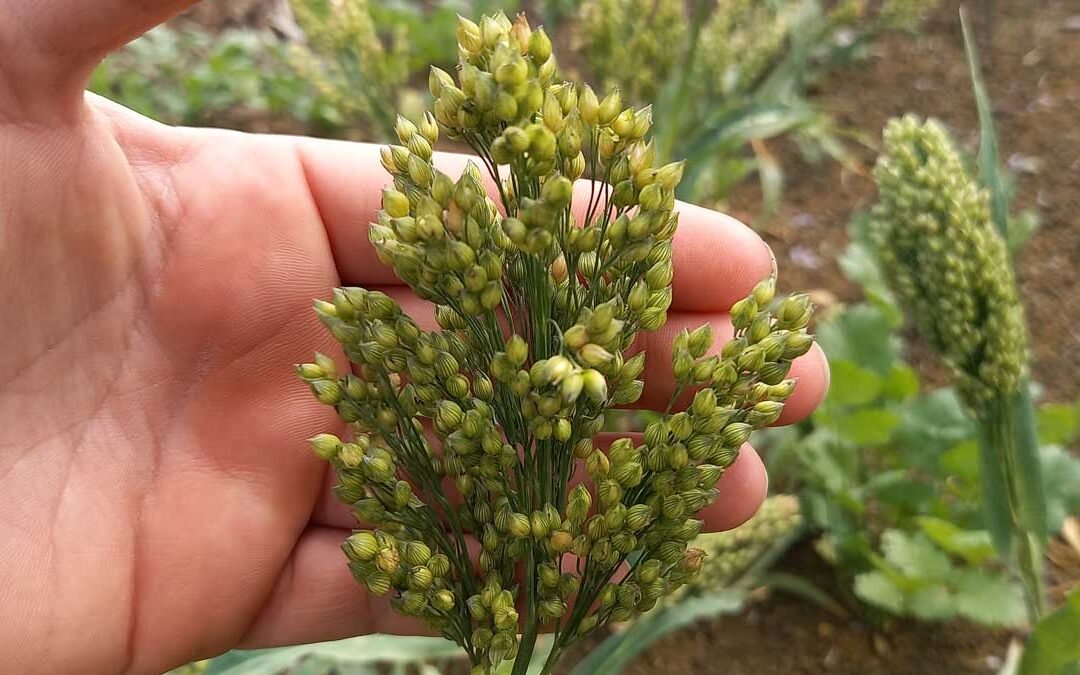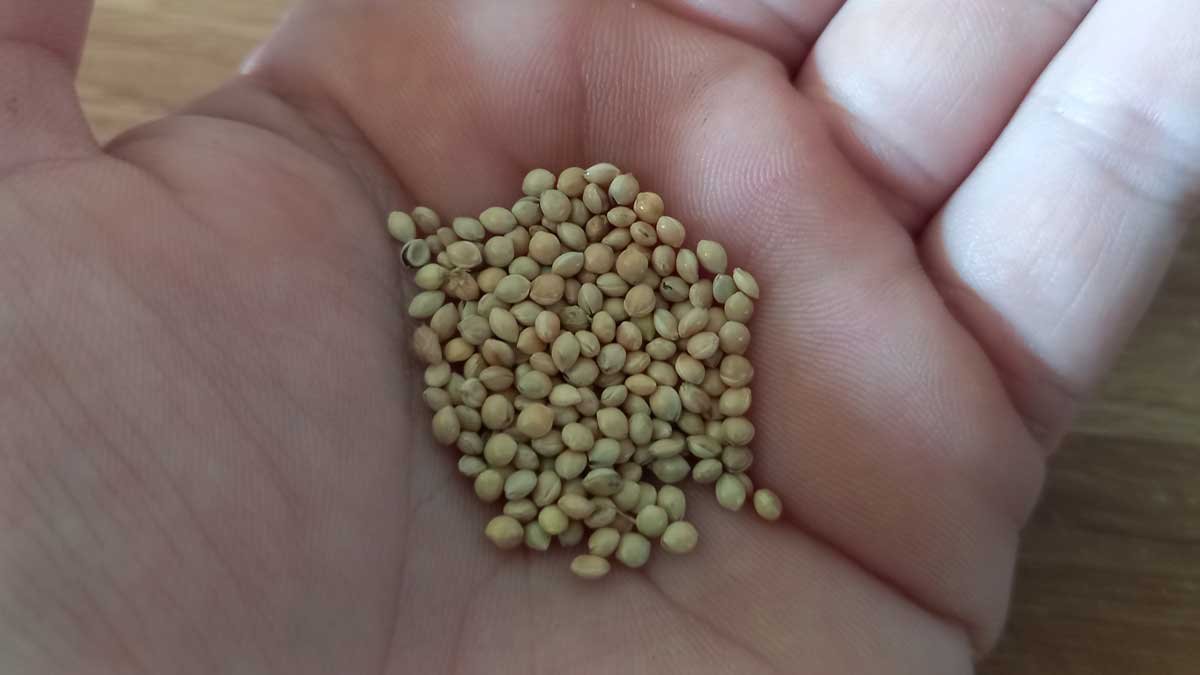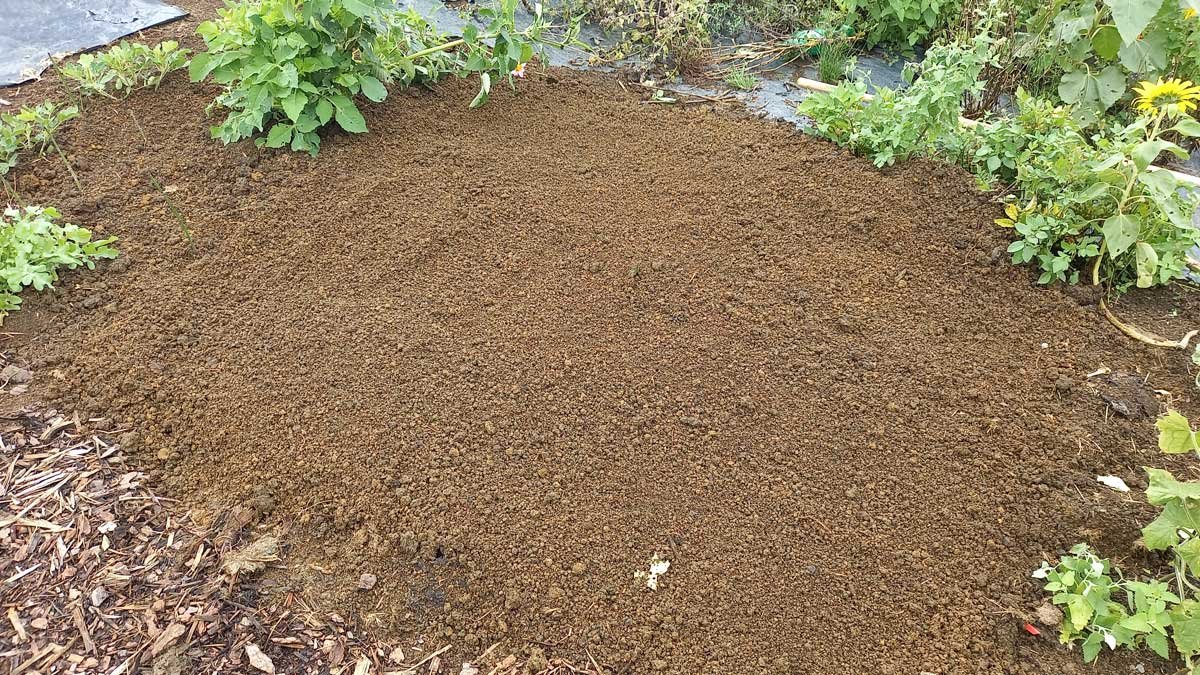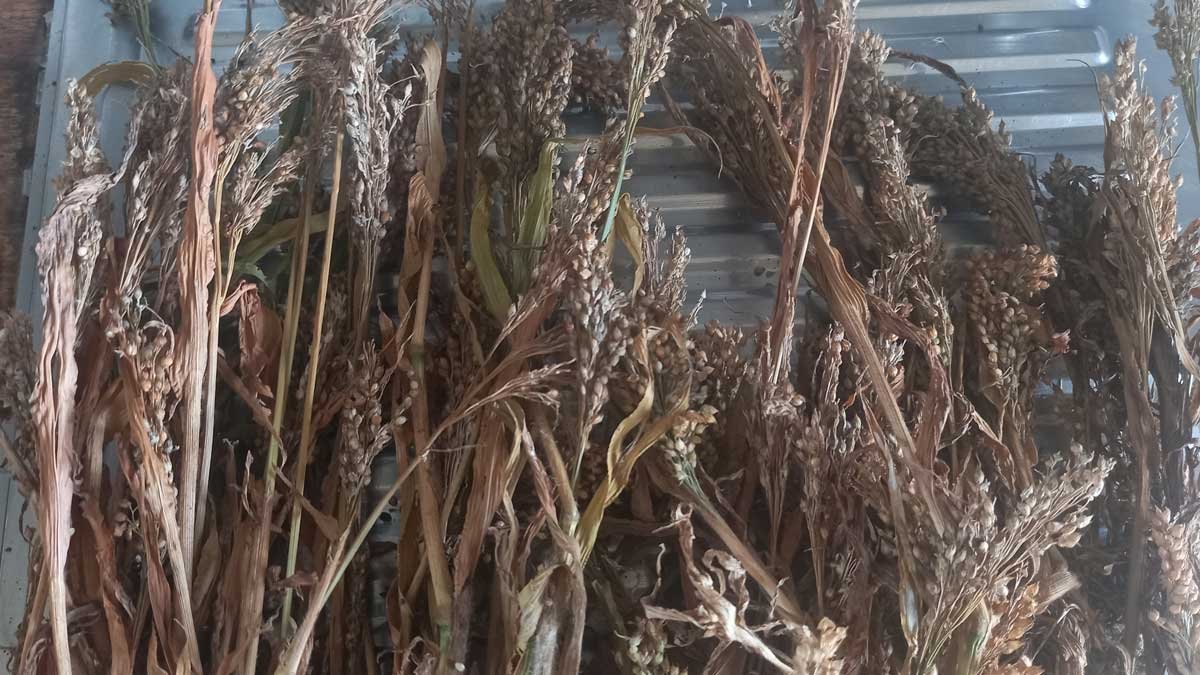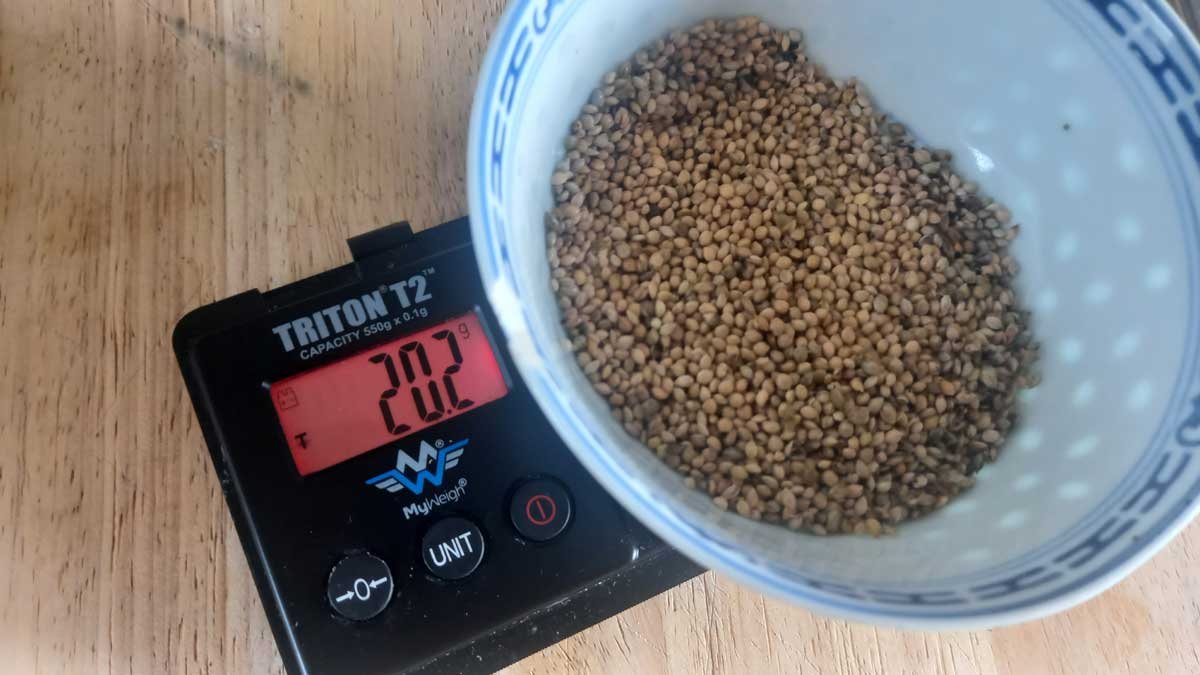Did you know that the UN has declared 2023 the International Year of Millets?
Neither did I. In fact, I wasn’t even totally sure what millet was when I turned on a BBC podcast about the future of food crops and learned that millet might actually be quite a good grain crop for us.
With food shortages and price increases on everything, I like to experiment and learn what is possible to grow here. Even though we’ve had a particularly wet summer this year, I know that long-term, it’s expected to get drier.
We’ve been in a wet cycle for over a year now, but dry years are a probability in the future. We are currently well over the average rainfall whichever way you measure it – logic says that at some point, the average is gonna – well – average out.
So when I learned that millet was a staple grain crop that:
- Grows well in drought conditions
- Grows fast (45-60 days)
- Tolerates a wide range of soils, including poor and clay soils.
Well, it’s got to be worth a try, right?
Sourcing millet seed
As it turns out, millet isn’t one thing, it’s lots of plant species. There are short millets and tall millets. They originated in different parts of the world. There’s even an ornamental millet.
I guess this is why the UN made the ‘millets’ plural. There’s a lot of choice.
I was pretty happy to find that Kōanga Institute stock three types of millet: Foxtail, Prosso, and Barnyard. I didn’t get the Barnyard because it grows taller making it harder to care for and harvest; and I read millets cross-pollinate easily so I wanted to limit myself to one per season.

So I figured I’d grow the faster-growing Prosso over late summer-early autumn, and try the Foxtail next spring. Depending how those go, I might try the Barnyard in the future, but I’ll try growing two millets in the International Year of Millets.
I also found Newton Seed selling 1kg bags of Japanese millet, which looks to be a good stock feed. Millet is a pretty common bird food, so you could probably just plant from millet sprays if they happen to be the easiest way to source your seed.
Why grow millet
For us, mostly it’s about having a back-up grain for chicken food. I’m not aiming to grow a year’s supply of chicken food, but I do like to grow a few crops over the year that can be dry-stored to supplement their purchased feed.
It brings the bill down a tiny bit, makes their lives more interesting, and gives me some confidence that if supply chains were interrupted, we’d be able to keep feeding them.
Neither Richard or I are big fans of pumpkins, but most years we’ll grow some because they store well and make great chicken food. Sunflower seeds are great chook food too.
In the past, I’ve tried growing barley. It wasn’t my best year or best garden, but I got a decent harvest off it. It just really sucked to thresh. Still, I’ve got enough seed saved to sow a bed in it another time if I want or need to.
Millet should be easy and fast to grow. It also sounds much simpler than barley to process into a form that is edible for ourselves.
Growing Prosso
I broadcast sowed my Prosso seed by throwing it over a mostly-empty garden bed and raking it in on the first of February.
It began germinating by the fifth. I may have lost some to slugs and snails at this point as I didn’t protect it in any way
It began flowering by March 6th.
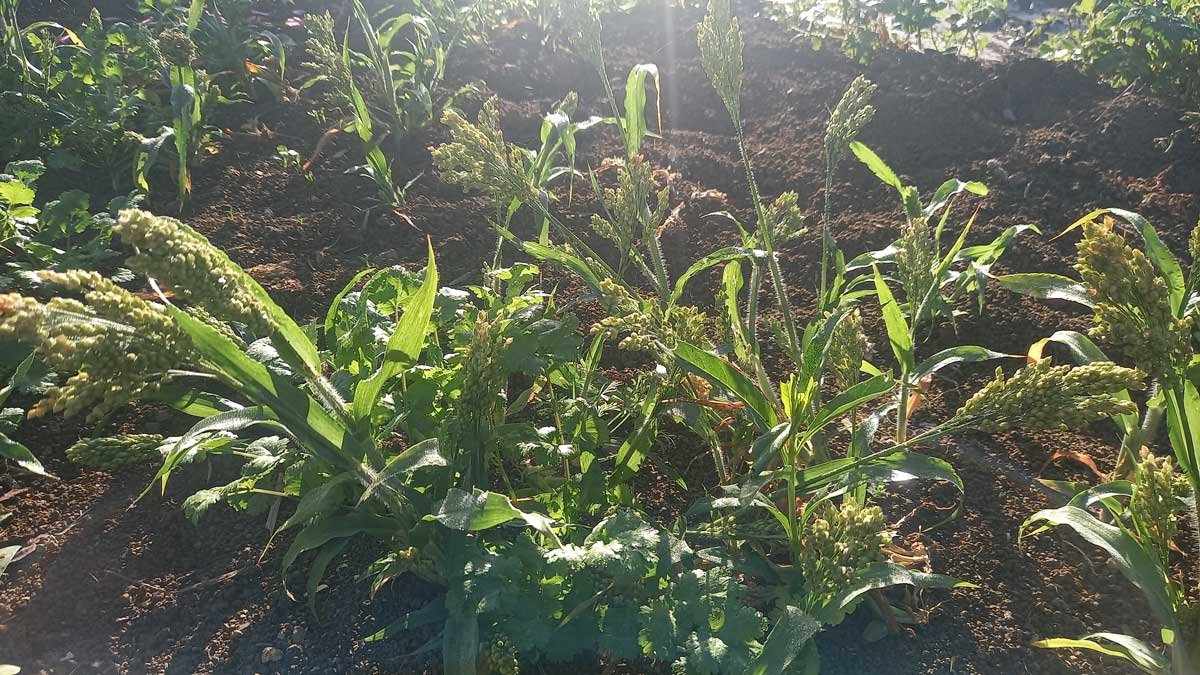
They didn’t get very tall, mostly staying below 30cm. A lot of them fell over and grew along the ground.
And by mid-late April they were drying off. One of our chickens had learned of its existence and she kept escaping her enclosure to go eat it. I had to race her for the harvest.
Harvesting Prosso
I ended up collecting the plants individually as I noticed them drying off over a period of about 3 weeks. I just ripped the whole plant from the ground, keeping them upside-down in a cardboard box until I was ready to thresh and clean the seeds.
It wasn’t the most elegant or organised effort, but it worked. Mostly.
On the first of May – exactly 3 months from sowing – I had pulled the last plant from the ground and was ready to thresh the seeds.
Each year about this time I’m incredibly grateful to past-me who purchased a set of seed-saving screens from Crafty Gatherer many years ago. They proved helpful once again for cleaning the seed.
My poor harvesting technique led to 3 or 4 stems developing some mould. So I removed that, and the affected seed.
Then I started cleaning the seed – separating it from all the other vegetable matter.
In the end, I got a little over 20 grams of millet. Maybe enough to feed a chicken for a day. Not even a loaf of bread. But still an increase to what I began with, so I can still take another shot at it in the future.
One down, one to go…
So that was Prosso. It was certainly easy enough to grow and harvest, but I haven’t really got enough of it to do anything other than save seed and try growing it again another time.
The chickens do seem to enjoy it as a food source though.
I’ll be planting the Foxtail in spring and seeing how that goes. It’s supposed to be taller, and it should take a little longer.
I’ll be changing my sowing technique and planting it deeper (probably in rows) to see if that helps it stay upright a little better. I’ll also try to dry my harvest properly – at least the racks will be available in early summer.
Either way, millet has been fun. Overall easier than barley – especially to thresh – and with similar reward from my (rather limited) experience.

